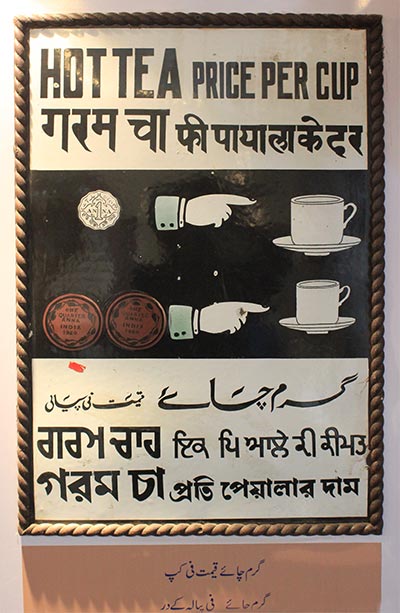Written by: Shaharyar Ahmed
Posted on: September 17, 2018 |  | 中文
| 中文
Tourists taking a tour of the Golra Sharif Railway Station
Pakistan has a rich history and culture, but only a handful of museums have been established around the country to showcase our artifacts. One example of a marvelous but barely known museum is present in the Golra Sharif Railway Station, known as the Golra Sharif heritage museum, situated in the outskirts of the capital city of Islamabad.
Before talking about the museum, it’s important to understand the history of the Golra Sharif Railway Station. Established in 1881 and further upgraded to the status of “junction” in 1912, the railway station is of supreme historical value. It was built by the British during their military campaigns in Afghanistan, for the purpose of providing logistical support to the British troops. The station was also responsible for connecting Punjab to the northern areas of the country, and for a considerable time, it was a stop on the trade route between India and the western regions of the world.
At present, it’s difficult to access the railway station, since the path leading from the road to the station isn’t well-developed, and the lack of signboards can cause further problems for a new visitor. However, once reached, the railway station building and surrounding greenery present a picturesque view, evoking its colonial history.

The Golra Sharif Heritage Museum was established in 2003, with the efforts Ashfaq Pervez, who happened to be the Deputy Superintendent of Rawalpindi at the time. He took a tour across the country of all the railway stations, and collected antique items from different places which were then brought together under one roof. With the persistent efforts of the Ministry of Railway, they have also managed to establish a larger facility known as the “Main Hall,” which was inaugurated on 21st April, 2018 by Railway Minister, Khawaja Saad Rafique. The museum currently has a range of items, including locomotives, historic railway coaches, locomotive trains and military equipment used by the British before partition.
Upon entering the facility, the placement of items is an important aspect to look out for. The curator of the museum, Ms. Ujala Irshad said, “We have placed the items according to the chronology of events. As you can see, the partition items are placed separately, so that the visitors can gain deeper insight about the events that took place in 1947.”
The insides of the museum are steeped in our rich history, with valuable pieces such as signal lamps, token machines, Morse code communication machines, electric fuses, train models, stoves, old telephones and gate lamps to be discovered in different corners. Some of the railway equipment, such as the Neel-Bolt token machine, was captured in 1965 by the Pakistan Army from India’s Khem Karan Station, adding further historic value to the place.
Outside the museum there are three types of coaches based on the width of the tracks; the narrow gauge, the meter gauge and the broad gauge. The purpose of the narrow and the meter gauges was to allow the trains to pass through hilly areas such as Tall in KPK province or Quetta in Balochistan. However, with advancements in technology, the railway system of Pakistan is now based on a broad-based gauge system.
The coaches present in the railway station are also historically significant. For example, the 1888 Royal Saloon, which was used to travel from the Rajasthan state (now part of India), to the city of Jodhpur (also part of India), was gifted by the Maharaja of Jodhpur, Gaj Singh II, to his daughter, and was built in Ajmer. There is another Royal Coach, which happened to be the property of the last Viceroy of India, Lord Mountbatten, who was a frequent traveler.
Steam engines and electric engines are a key attraction of the museum. One of the engines standing at a slight distance was the Canadian Steam Engine, gifted by the Canadian Government to India in the year 1945. The Electric Engine was first built in 1913, and would travel on the route of Lahore to Khanewal. With time, it became too costly for the country to run and therefore, it was abandoned.
As fascinating as the museum is, there weren’t as many visitors as one would expect. Mr Waheed Mehmood, a guide at the museum, said, “We have tons of visitors over the weekend, however, I feel that it needs to be advertised for attracting more tourists. We currently run a Facebook page and plan to further engage different organizations for the promotion of this place. I really encourage everyone to visit us.”
The railway station is a place you won’t easily forget, and it is highly recommended that both locals and tourists pay it a visit. For a ticket of mere PKR 10, one can get a whole tour with guides who are well informed about the events and timelines of the items placed inside.
* The Golra Sharif Railway Station can either be approached from sectors E-11 and D-12 or G-13 in Islamabad. The road is smooth for a considerable time before a track appears. The Railway Station is situated at the end of the track.
You may also like: